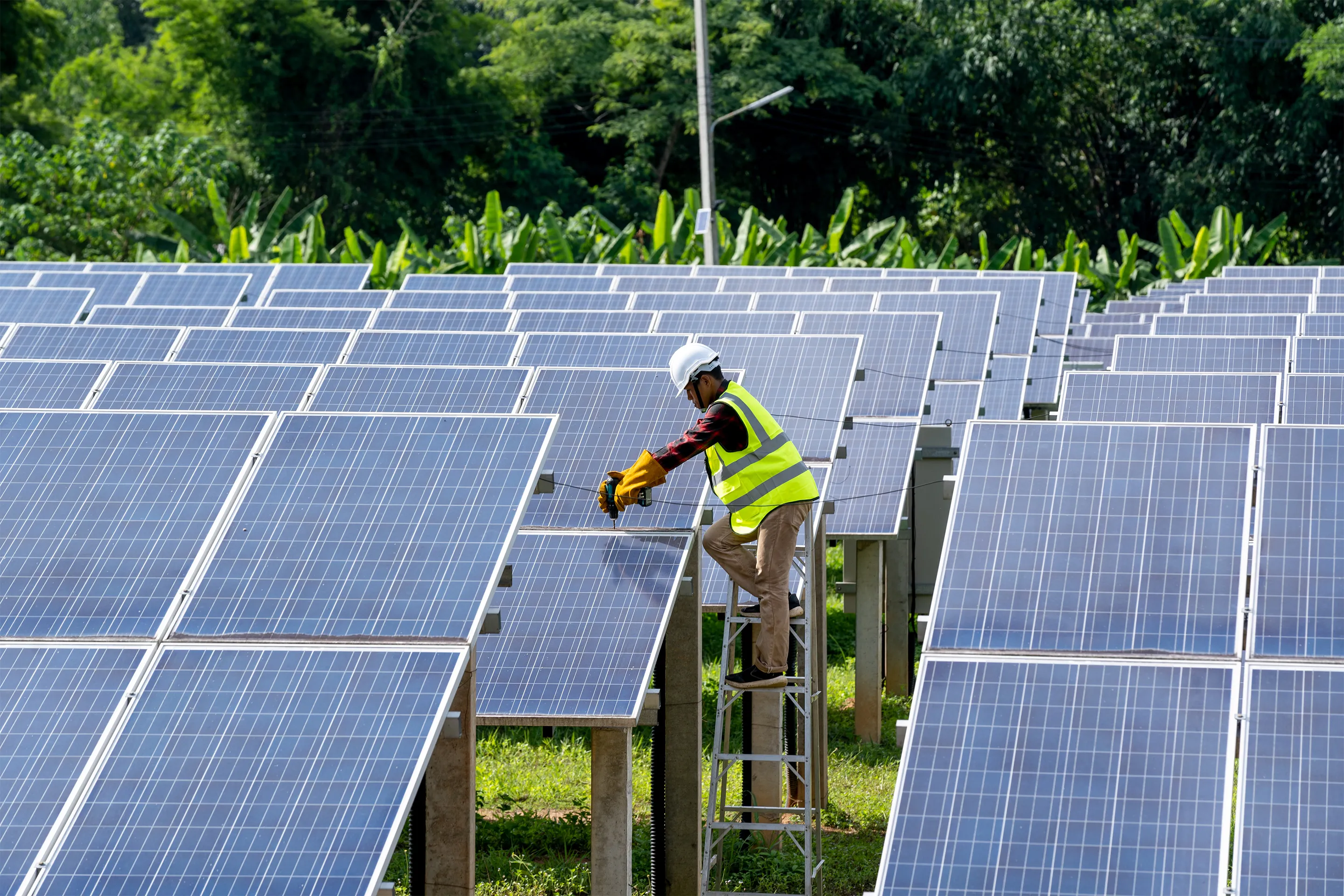The 3-Minute Rule for Solar Panel Installation Pennsylvania
Solar Panels Pennsylvania: Our Company Focuses On The Setup And Management Of Photovoltaic Energy Systems
History and Development of Solar Panel Business
The inception of photovoltaic panel companies can be traced back to the 1800s when Alexandre Edmond Becquerel discovered the photovoltaic impact. Would he have thought of how his discovery would transform the way we harness energy?
Early Beginnings

In 1954, Bell Labs established the first useful solar battery. This marked a substantial turning point in the history of solar energy. They were at first used to power area satellites, however who understood this was just the start?
Development and Development
- In the 1970s, an energy crisis led to increased interest in renewable resource sources, including solar power.
- By the 1990s, advancements in innovation and increasing ecological awareness caused the growth of solar panel companies globally.
A New Age
As we got in the 21st century, the solar market saw a rapid growth. The need for tidy and renewable resource brought about a new age in the solar panel industry.
Remarkable Facts
- The world's very first solar energy station was constructed in 1982 in Hisperia, California.
- By 2019, solar power had become the world's fastest-growing source of power.
Certainly, the journey of solar panel companies has been remarkable, hasn't it? The future holds immense potential, with continuous improvements paving the way for a sustainable future. Can we envision a world powered completely by solar energy?
Moving on
Today, solar panel business continue to innovate, aiming for more efficient and cost-efficient options. The advancement of solar power has actually come a long method, and yet, the journey has simply begun.
The Core of Solar Panel Production
Ever question what enters into producing those glossy, sun-loving photovoltaic panels? The procedure is as impressive as the end item (Best Solar Panel Company In PA). High-purity silicon, the primary component in photovoltaic panels, undergoes different improvements to ensure its performance and resilience
From Sand to Silicon
Crystalline silicon, the backbone of a lot of photovoltaic panels, stems from easy sand. It's a remarkable journey, isn't it? The sand undergoes a high-temperature reaction with carbon to form silicon. This isn't simply any silicon. The silicon utilized in photovoltaic panels is "solar-grade," with a purity of read more 99.9999%. It's this purity that allows the panels to efficiently transform sunshine into power.
Ingot Formation
As soon as the silicon is pure enough, it's time to form ingots. Image a large, round block of strong silicon. How is this achieved? Through a procedure called Czochralski procedure, where the silicon is melted and then gradually recrystallized. It's a slow dance of science, resulting in a strong product that is nearly as pure as the raw silicon itself.
Slicing into Wafers
The ingots are then sliced into wafer-thin pieces, like slicing a loaf of bread. Each slice is a prospective solar cell, waiting to harness the power of the sun. Did you understand that the silicon wafers are just about 200 micrometers thick? That has to do with half the density of a human hair! The procedure needs precision and perseverance, however the outcome is a set of wafers all set to be turned into solar cells.
Developing Solar Battery
With the wafer ready, it's time for the magic to occur. The silicon wafer is 'doped' with other elements like phosphorous and boron to develop an internal electric field. It's this field that enables the conversion of sunshine into electricity. Complex, isn't it?
Assembly and Quality Control
Solar battery resemble puzzle pieces that come together to form a photovoltaic panel. The cells are soldered together in a grid-like pattern, then covered with a protective layer of glass. The final action includes extensive quality assurance checks. After all, it's essential that every solar panel carries out at its peak, would not you concur?
Insider Suggestion
Always remember that even the most efficiently manufactured solar panel can lose effectiveness due to dirt and particles build-up. Regular cleansing can significantly improve your panels' efficiency.
Understanding the Environmental Impact of Photovoltaic Panel Companies
Ever considered the environmental footprint of a photovoltaic panel business? Green technology, such as solar, has changed our energy landscape, however what about the behind-the-scenes effect?
The Production Process: A Double-Edged Sword
The manufacturing process for solar panels demands a significant quantity of energy. This process, referred to as 'em bodied energy', can be viewed as a type of 'energy debt'. It's a little like borrowing today's sunshine to power tomorrow's energy requirements. Fret not, the energy repayment time is often shorter than you 'd believe!
- The energy payback period for solar panels is typically 1-4 years.
- After this duration, the energy produced is basically carbon-free.

Life After Decommission
And what occurs when a solar panel reaches the end of its life expectancy? Can it just be tossed into the trash? No, that wouldn't be really green, now, would it?
A practical service is recycling. While photovoltaic panel recycling is still in its infancy, it holds a world of potential. Recycling not only keeps materials out of garbage dumps but also decreases the need for new raw materials.
Responsible Sourcing: More Than A Buzzword
Where does the silicon originated from, you ask? Regrettably, the market's need for silicon and rare minerals can result in damaging mining practices. Responsible sourcing is therefore crucial to decrease harmful environmental impacts.
Lowered Carbon Emissions: The Bigger Picture
Let's not forget the bigger photo: solar energy considerably reduces carbon emissions. As soon as installed, solar panels produce clean, sustainable energy, balancing out their preliminary production footprint.
In other copyright, the ecological impact of photovoltaic panel companies is an intricate concern. However, with responsible practices, the pledge of a cleaner, greener future is well within our grasp.

Financial Performance and Market Share of Solar Panel Companies
Ever questioned why some solar panel companies - Residential Solar Panels PA outperform others in the market? What sets them apart? The key depend on their monetary performance and market share
Financial Efficiency: A Vital Sign
Financial efficiency plays a critical function in the success of any service. For photovoltaic panel business, it's no various. Strong monetary efficiency allows these business to buy cutting-edge technology, research study, and advancement, therefore creating high-quality, efficient photovoltaic panels.
How do they attain this? With a concentrate on cost effectiveness and tactical financial investments. Companies that manage to reduce production expenses without compromising on quality tend to fare better in the market.
Market Share: A Step of Success
Market share, on the other hand, is a direct reflection of a business's popularity among consumers. A high market share implies more homeowners are selecting their solar panels over rivals.
What's the secret recipe for gaining a bigger market share? It boils down to consumer fulfillment and brand reputation. Business that prioritize customer needs and maintain a favorable brand name image are most likely to record a bigger share of the market.
- Client Satisfaction: Solar panel business that deliver reliable products and exceptional customer support tend to have greater consumer satisfaction rates.
- Brand Reputation: A strong brand credibility is constructed with time through constant shipment of quality product or services.
Financial Performance and Market Share: The Cooperative Relationship
Interestingly, the relationship in between financial efficiency and market share is not one-sided. They feed off each other. A strong monetary performance can increase a company's market share, while a high market share can improve financial performance.
As a photovoltaic panel business, stabilizing these 2 aspects is essential for long-lasting success. A company that ignores either of them might find it hard to keep its position in the competitive solar market.
The Takeaway
What does all this mean for you? Whether you're a homeowner aiming to install solar panels or a financier eyeing the solar market, comprehending the monetary performance and market share of photovoltaic panel companies is important. They are key indications of a company's health and capacity for future growth.